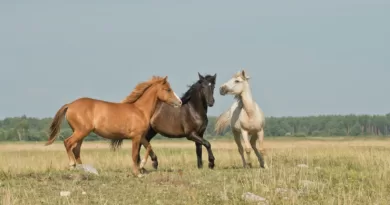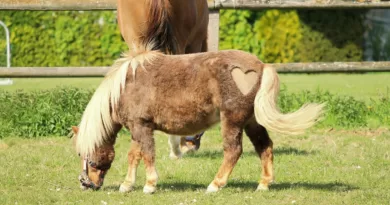Can Horses Eat Fresh Cut Grass
Understanding the Nutritional Needs of Horses
Horses, like any other living creature, have specific nutritional needs that must be met in order to maintain optimal health and performance. Understanding these needs is crucial for horse owners and caregivers, as it directly influences the overall well-being of our equine companions.
One key element in a horse’s diet is forage, which primarily consists of grass and hay. Forages provide essential nutrients, including fiber, vitamins, and minerals, which are necessary for proper digestion and overall health. The horse’s digestive system is designed to efficiently process forages, making them a vital component of their daily nutritional intake. Additionally, forages help maintain a healthy weight and proportions in horses, as they are low in calories and high in fiber, promoting a natural feeding behavior.
Identifying the Benefits of Fresh Cut Grass for Horses
Fresh cut grass can provide numerous benefits to horses in terms of their overall health and well-being. Firstly, fresh grass is an excellent source of essential nutrients, such as vitamins and minerals, that horses need to maintain optimal bodily functions. These nutrients play a vital role in promoting muscle growth, bone development, and a healthy immune system. Furthermore, the high water content in fresh grass helps to keep horses hydrated, especially during hot weather or intense physical activity. Adequate hydration is crucial for proper digestion, nutrient absorption, and maintaining healthy bodily functions in horses.
In addition to providing essential nutrients and hydration, fresh cut grass offers horses a natural source of fiber. Fiber is crucial for maintaining a healthy digestive system and preventing issues such as colic or digestive discomfort. Fresh grass is rich in soluble fiber, which supports the growth of beneficial bacteria in the horse’s gut, aiding in proper digestion. This can help prevent digestive disorders and promote regular bowel movements. The act of grazing on fresh grass also stimulates saliva production, which further aids in the breakdown of food and improves overall digestion. Additionally, the physical action of grazing can help keep horses mentally stimulated and reduce boredom or stress in their daily routine.
Exploring the Potential Risks of Feeding Fresh Cut Grass to Horses
Feeding fresh cut grass to horses can provide numerous benefits, but it is important to also consider the potential risks associated with this practice. One of the main risks is the possibility of introducing harmful weeds or toxic plants into the horse’s diet. While grass generally contains essential nutrients for horses, it can also harbor weeds such as buttercups or ragwort, which are toxic to horses if ingested in large quantities. Therefore, it is crucial to carefully inspect the grass before feeding it to horses to ensure the absence of any harmful plants.
In addition to potentially toxic plants, there is also the risk of grass being contaminated with pesticides or herbicides. These chemicals can not only be detrimental to the horse’s health but may also have long-term effects on their overall well-being. Horses are sensitive creatures, and exposure to these substances can lead to digestive issues, respiratory problems, or even organ damage. Therefore, it is essential to consider the source of the grass and whether it has been treated with any chemicals before feeding it to horses.
• Carefully inspect the grass before feeding it to horses to ensure there are no harmful plants present.
• Be aware of common toxic weeds such as buttercups or ragwort that may be mixed in with the grass.
• Consider the source of the grass and whether it has been treated with pesticides or herbicides.
• Exposure to these chemicals can lead to digestive issues, respiratory problems, or organ damage in horses.
Alternatives to Fresh Cut Grass for Equine Diets
One alternative to fresh cut grass for equine diets is hay. Hay is a common staple in horse feed and is derived from dried grasses, legumes, or a mix of both. It provides a source of long fiber that promotes healthy digestion in horses. Hay is available in different varieties, such as timothy, alfalfa, and orchard grass, allowing horse owners to choose the best option based on their horses’ nutritional needs and activity level.
Another alternative to fresh cut grass is silage. Silage is fermented forage, typically made from grass or corn crops. It is a good option for horses with specific dietary requirements, as it retains most of its original nutrients due to the fermentation process. However, it is important to note that silage can have higher moisture content and can be more prone to spoilage if not stored properly. Therefore, it is crucial for horse owners to understand the proper handling and storage procedures to ensure the quality and safety of the silage for their horses.
Tips for Introducing Fresh Cut Grass to Horses’ Diets
Introducing fresh cut grass to a horse’s diet can provide them with a variety of nutritional benefits. However, it is important to approach this change gradually and carefully to prevent any digestive disruptions or health issues. Here are some tips for successfully introducing fresh cut grass into a horse’s diet.
Firstly, it is crucial to start with small amounts of fresh cut grass and gradually increase the quantity over time. This allows the horse’s digestive system to adjust and prevents any sudden changes that might cause discomfort or colic. It is recommended to begin with just a handful of grass and gradually increase it to a full serving size over a period of several days or weeks, depending on the horse’s individual tolerance. Monitoring the horse’s digestion, behavior, and overall health during this process is essential to ensure a smooth transition.
Secondly, always ensure that the fresh cut grass provided to the horse is of good quality and free from any potential contaminants or toxic plants. Thoroughly inspect the grass for any mold, weeds, or harmful substances before offering it to the horse. Additionally, it is important to cut the grass at the optimal length to prevent choking hazards or digestive blockages. Consulting with a veterinarian or equine nutritionist can provide valuable guidance in determining the appropriate length and quality of grass to introduce to the horse’s diet.
By following these tips and taking a gradual approach, horse owners can safely introduce fresh cut grass into their horse’s diet, providing them with nutritious and enjoyable forage. However, it is important to remember that each horse is unique, and what works for one may not work for another. Monitoring the horse’s well-being and consulting with a professional throughout the process is key to ensuring a successful transition.
The Importance of Moderation in Feeding Fresh Cut Grass to Horses
Feeding fresh cut grass to horses can be a healthy and nutritious addition to their diet. However, it is crucial to understand the importance of moderation in this practice. While horses naturally graze on grass throughout the day, excessive consumption of fresh cut grass can lead to various health issues.
One of the major concerns with overfeeding fresh cut grass is the risk of colic. Horses that eat large quantities of grass at once may struggle with the digestion process, potentially causing a blockage in their gastrointestinal system. Moreover, an excessive intake of grass can lead to a rapid increase in blood sugar levels, which can be detrimental for horses with metabolic conditions such as insulin resistance or equine metabolic syndrome. Therefore, it is important to carefully monitor the amount of fresh cut grass provided to horses and ensure it is provided in moderation.
Monitoring Horses’ Digestive Health when Feeding Fresh Cut Grass
Digestive health is crucial for the overall well-being of horses, and monitoring their digestive system becomes even more important when introducing fresh-cut grass into their diet. While grass is a natural part of a horse’s diet, sudden changes or excessive amounts can lead to digestive issues. One key aspect to monitor is the horse’s manure consistency. Any significant changes in the consistency, such as loose or watery stools, could indicate an imbalance in the digestive system. Additionally, observing the horse’s behavior during and after feeding grass can provide insights into their digestive health. Signs of discomfort, such as pawing the ground or repeatedly lying down, could be indications of digestive upset and should be addressed promptly.
Recognizing Signs of Allergic Reactions in Horses from Fresh Cut Grass
Allergic reactions in horses from fresh cut grass can manifest in various ways, and it’s important for horse owners to be able to recognize the signs. One common sign of an allergic reaction is excessive itching or scratching, particularly in areas where the horse has come into contact with the grass. Horses may also develop hives or welts on their skin. These can appear as small, raised bumps that may be red or pink in color. In some cases, horses may also experience respiratory symptoms such as coughing, wheezing, or difficulty breathing, which can indicate a severe allergic reaction. Monitoring the horse closely after introducing fresh cut grass to their diet can help identify any potential allergic reactions early on.
Another symptom to look out for is gastrointestinal upset in horses. Some horses may experience diarrhea or loose stools after consuming fresh cut grass. This can be accompanied by signs of discomfort or colic, such as pawing, restlessness, or repeatedly rolling. It’s important to note that these symptoms can also be caused by other factors, so it’s crucial to consult with a veterinarian to properly diagnose and address any potential allergic reactions. Being vigilant in recognizing these signs can help horse owners provide prompt medical intervention and appropriate adjustments to the horse’s diet if necessary.
Consulting with a Veterinarian before Feeding Fresh Cut Grass to Horses
When considering the inclusion of fresh cut grass in horses’ diets, it is important to consult with a veterinarian beforehand. Veterinarians play a crucial role in understanding the individual needs and health conditions of horses. They have the knowledge and expertise to assess whether introducing fresh cut grass is suitable for a particular horse, taking into account factors such as age, breed, weight, and overall health.
A veterinarian can provide valuable insights and advice on the potential risks and benefits of feeding fresh cut grass to horses. They can discuss any specific dietary requirements or restrictions that may exist for the horse, ensuring that the addition of fresh cut grass aligns with their nutritional needs. Consulting with a veterinarian before making any dietary changes is an essential step in promoting the overall well-being and digestive health of horses.
Understanding the Role of Fresh Cut Grass in Horses’ Overall Nutrition
Fresh cut grass plays a significant role in the overall nutrition of horses. As herbivores, horses rely heavily on grass as a primary source of nutrients. Grass provides essential vitamins, minerals, and proteins that are vital for a horse’s growth, development, and overall well-being. The high fiber content in fresh cut grass helps promote healthy digestion and prevents digestive disorders in horses.
In addition to being nutritionally beneficial, fresh cut grass also offers psychological benefits for horses. Grazing on grass allows horses to engage in natural foraging behavior, which helps reduce stress and promotes mental stimulation. The act of grazing also encourages horses to chew, which aids in dental health and prevents the development of dental issues such as uneven wear and sharp points. Overall, fresh cut grass is a vital component of horses’ diets, ensuring they receive the necessary nutrients and enjoy a well-rounded diet.
What are the nutritional needs of horses?
Horses have specific nutritional needs that require a balanced diet containing protein, carbohydrates, fats, vitamins, and minerals to support their overall health and performance.
What are the benefits of feeding fresh cut grass to horses?
Fresh cut grass is a natural source of nutrients and fiber, which can help improve digestion, provide hydration, and contribute to the overall well-being and satisfaction of horses.
Are there any risks associated with feeding fresh cut grass to horses?
Yes, there are potential risks such as the presence of harmful substances, such as pesticides or toxic plants, in the grass. Additionally, overconsumption of grass can lead to digestive issues like colic or laminitis.
What are the alternatives to feeding fresh cut grass to horses?
Alternatives to fresh cut grass include providing hay, haylage, or other forage options that are nutritionally balanced to meet the needs of horses. Commercially formulated horse feeds may also be used.
How can fresh cut grass be introduced to horses’ diets?
Fresh cut grass should be introduced gradually, starting with small amounts mixed with the horse’s regular diet. This allows the horse’s digestive system to adjust to the new food and reduces the risk of digestive upset.
Why is moderation important when feeding fresh cut grass to horses?
Feeding fresh cut grass in moderation is important to avoid overconsumption and prevent digestive issues. It is essential to monitor the quantity and quality of grass provided to horses to maintain a balanced diet.
How can I monitor my horse’s digestive health when feeding fresh cut grass?
Regularly observing your horse’s manure consistency, appetite, and overall condition can help identify any digestive issues that may arise from feeding fresh cut grass. Consulting with a veterinarian is also recommended.
What are the signs of allergic reactions in horses from fresh cut grass?
Signs of allergic reactions in horses can include skin irritations, hives, respiratory distress, or changes in behavior. If any of these symptoms occur after feeding fresh cut grass, it is important to seek veterinary advice.
Should I consult with a veterinarian before feeding fresh cut grass to my horse?
Yes, it is always recommended to consult with a veterinarian before making any significant changes to your horse’s diet, including introducing fresh cut grass. They can provide valuable guidance based on your horse’s individual needs.
What is the role of fresh cut grass in a horse’s overall nutrition?
Fresh cut grass can provide a natural and nutritious addition to a horse’s diet, contributing to their overall nutrition and well-being. However, it should be carefully managed and monitored to ensure it is fed safely and in moderation.




